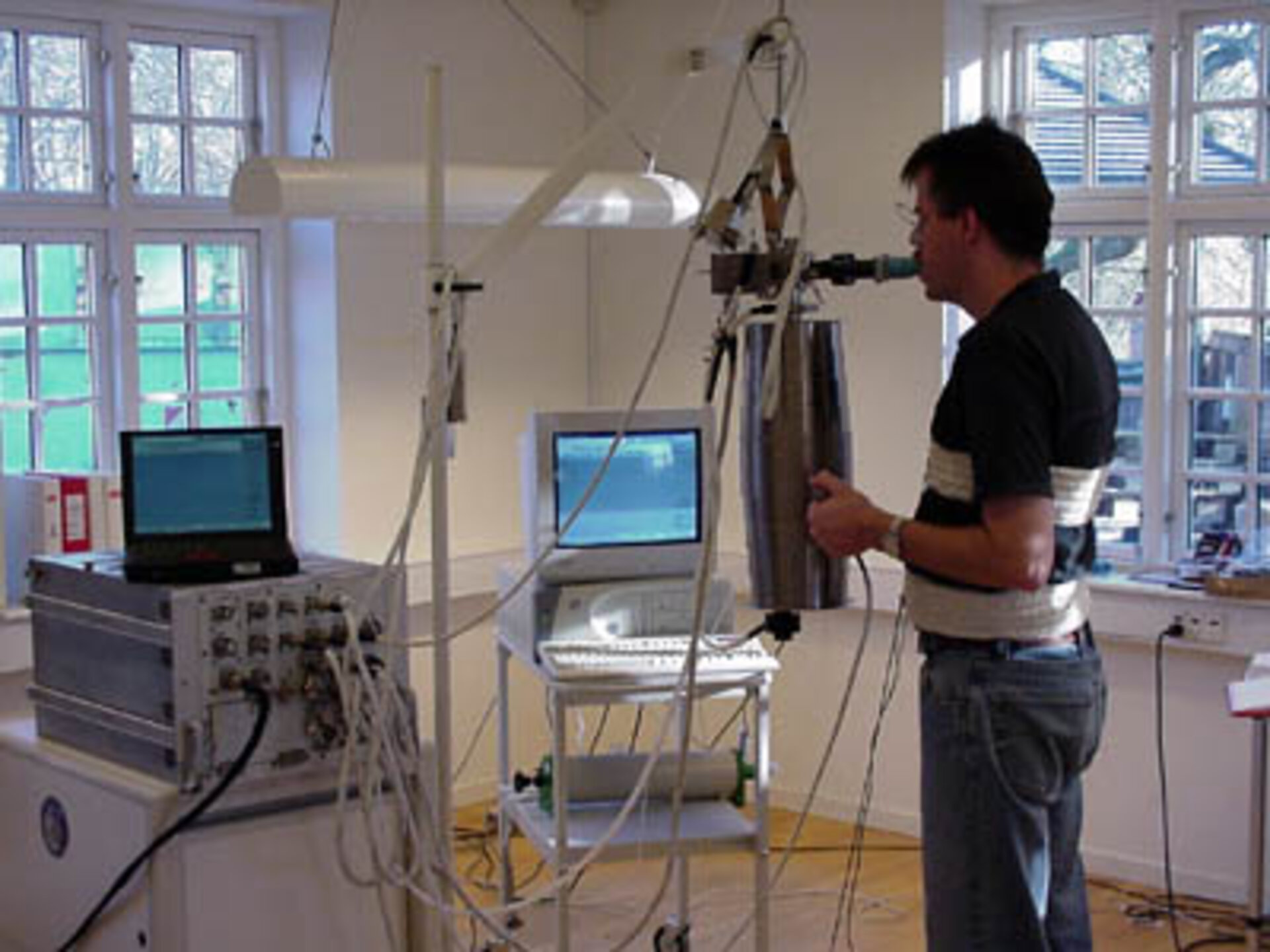Pulmonary Function
Floating particles in microgravity
Under the weightless and confined environment of spaceflight, astronauts are at risk of breathing dust and small particles free floating in the atmosphere. These particles can enter deep into the lungs, from the airways ducts to the alveolae. Depending on their composition they can cause irritation, bacterial contamination, or even lead to cancer. Therefore the development of efficient air filtering and cleaning systems is a priority, as also is the development of appropriate diagnostic devices.
Gravity and pulmonary function
Pulmonary function is also investigated in space because the distribution of blood into the lungs depends on gravity. On earth, due to the presence of hydrostatic pressure gradients, pulmonary blood flow is larger at the base than at the apex of the lungs. In microgravity blood is uniformly distributed in the lungs. Thus in-homogeneity of ventilation/perfusion, a confounding factor, is removed. Therefore the in-homogeneity of ventilation into the lungs has been studied during the past two decades. This fundamental research has contributed to improving the physical models of the lungs and gas exchange that are used in diagnostic devices and techniques for the assessment of pulmonary function.
Breathing and extra-vehicular activities (EVA)
Moreover, the headward fluid shift, which causes an afflux of blood into the thoracic cavity, leads to pressure changes in pulmonary circulation. This, combined with the lower atmospheric pressure that is maintained in the space suits of the astronauts while performing an EVA, generates environmental conditions similar to that faced by divers who can be exposed to venous gas emboli and decompression sicness. Such activities can potentially lead to pulmonary oedema, a fluid accumulation in the lungs causing impaired gas exchange, and possibly also lead to respiratory failure.
Research & Development
For all these reasons the pulmonary function has been extensively studied in space and remains an important subject of research. Specific diagnostic and research devices have thus been, and are still being developed (from the oldest to the newest esa developed systems for the evaluation of pulmonary function: ANTHRORACK, ARMS, PFS, PPFS, PLATON, MAP-RSS), and diagnostics methods are being improved.
Health related topics: pollution, dust particles, smoking, asbestos, asthma, and other pulmonary diseases, chronic obstructive pulmonary disease, monitoring at home, decompression syndrome…


